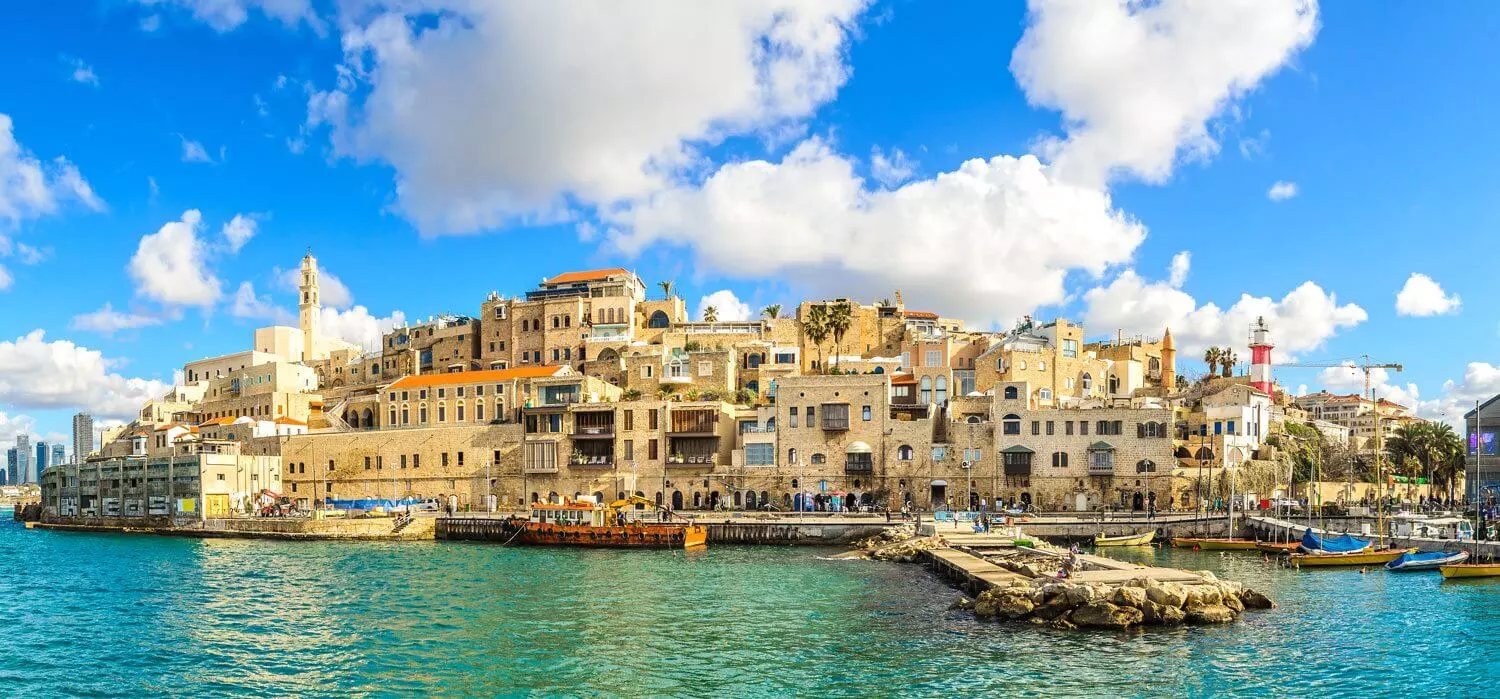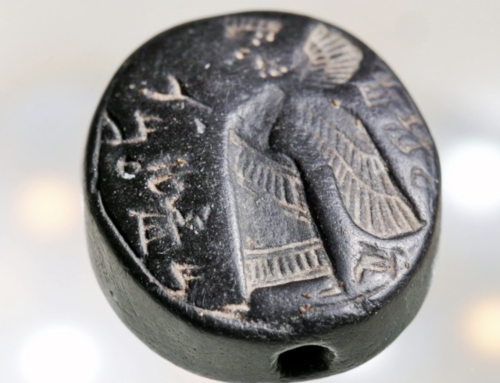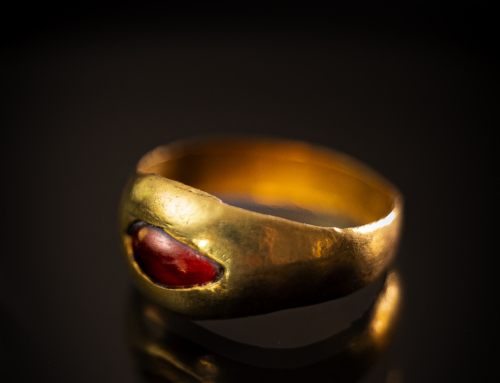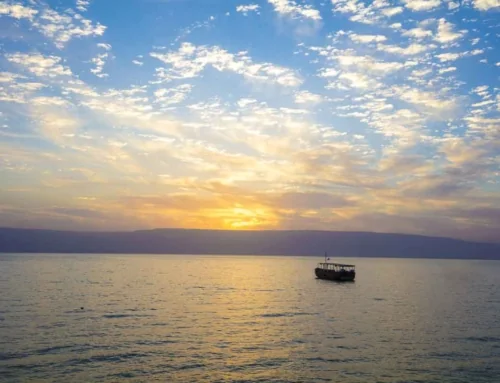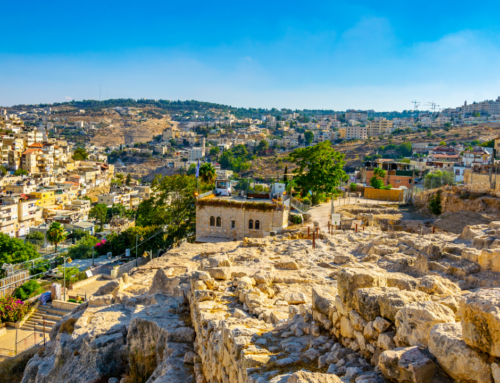When you travel to Israel, there will most likely be a route progress screen on your flight. As the flight gets closer to Israel, the screen will show the destination as Tel Aviv – Yafo. Upon arrival in Israel, you may have time to visit Jaffa (Yafo) before retiring to your hotel. The name Jaffa means “lovely” and you will be able to view the beauty of the Mediterranean all the way to the beaches of Tel Aviv.
Jaffa is said to be the oldest port in the world and was established by Japheth, the son of Noah. The oldest remains date back to the 16th century B.C. Archaeological excavations from 1955 uncovered remains from the Canaanites, a statue thought to be Aphrodite, as well as, ruins from the time of the Hasmoneans and Romans. Jaffa was the port that received the cedars of Lebanon which were used by King Solomon in building the Temple.
According to the Bible, Jaffa is where Jonah boarded a ship for Tarshish (Jonah 1:3), running away from God because he didn’t want to preach in Nineveh. Where did that get him? He was thrown overboard and was swallowed by a great fish, which is also referred to in children’s stories as a whale. There is a patina statue of a large smiling fish at the entrance of Jaffa. It makes for a nice photo opportunity.
In Acts 9:40, we are told that while Peter was in Jaffa (Joppa), he raised Tabitha (Dorcas) from the dead. As a Bible student, I’m certain you recall the vision that Simon Peter had while in Jaffa (Joppa). He would soon realize the purpose of that vision when the men arrived to ask him to return with them to the home of Cornelius the Centurion (Acts 10). It was dangerous for a Jew to enter the home of someone from another nation. Cornelius was commander of an Italian brigade. But, Simon Peter learned from his vision that God shows no partiality with men. It is in the home of Cornelius that non-Jews became believers in the Messiah.
This important port suffered through numerous military commanders because of its prominence in providing an entrance to the land, after which many of the armies would continue their march to Jerusalem. The periods of history were not kind to Jaffa, but they are worth mentioning in order to get an overall view of its past and present.
The Hellenistic Period followed the Babylonian exile in the sixth century B.C. Jaffa came under control of the Phoenicians and then the Greeks, or Hellenists. In short, Hellenists were Jewish believers that adopted the Greek lifestyle and language from their time in the diaspora.
During the Roman period, Pompey conquered Israel in 66 B.C. and Jaffa became a free city state separated from the State of Israel. It was Herod, who conquered Jaffa in 38 B.C. as he was pushing toward Jerusalem to establish his reign. As you can see, most of the conquering armies, landed at Joppa, and then pushed their way to Jerusalem.
During what is considered the Arab period, Jaffa was conquered by the Muslims. It was a difficult time, but the port continued to be a place of entry for Christians and Jews. These travelers were mostly pilgrims to the Holy Land – like you soon will be.
It should come as no surprise that Jaffa was conquered by the Crusaders in 1099. Since Jaffa was the main port to Jerusalem, the Crusaders kept coming. It is during this time that almost all Jews of Jaffa left for Europe.
This brings us to the Mamluks. Who were the Mamluks? They were mostly Egyptian, but some were from southern Russia and Turkey. The Mamluks destroyed the port of Jaffa in order to prevent the ships of Christian warriors from invading.
It was during the Ottoman period that Jaffa began to manufacture and export soap. It was also during this time that oranges were introduced to the world of trade. Don’t miss the opportunity to enjoy a Jaffa orange during your visit to Israel.
There are many eras of Israel’s long history. Find out more here.
Napoleon conquered the town in 1799, and there is a statue of him in the town center. It’s another photo opportunity!
In 1909, a group of Jews from Jaffa decided to leave the crowded streets of the town, and bought a section of sandy land north of Jaffa. You guessed it – Tel Aviv. In 1949, the Israeli government decided to merge Jaffa with Tel Aviv, and the name today is Tel Aviv – Jaffa.
Today, Jaffa’s narrow streets are filled with galleries, cafes, and shops. A casual walk through the winding narrow streets emphasizes the resiliency of a people. You would never consider that Jaffa had such a catastrophic past. There are other points of interest in Jaffa, such as, the Clock Tower built in 1901, St Peter’s Church in the town center, Ramses Gate built in the 18th Century, and Gate of Faith built in the 20th Century.
Are you tired of the history lesson? Okay – on to Tel Aviv. Tel Aviv is a vibrant modern city with white sand beaches, modern shops, and inviting restaurants. During the day, you can enjoy a casual stroll on the promenade or the beach, and at night watch the city come to life on Dizengoff Street.
Tel Aviv was the first all-Jewish city in the modern era. As mentioned previously, it was established by 60 families from Jaffa in 1909, and the name was changed to Tel Aviv in 1910. As with all Hebrew names, Tel Aviv has a special meaning, “hill of spring.”
Check out other interesting facts about Israel.
Modern Tel Aviv is Israel’s second largest city, with a population of just over 440,000. The city has the same traffic problems of any large city in the west. It can be brutal in the evening.
Tel Aviv houses the Tel Aviv Stock Exchange and the Diamond Exchange. The high-tech industries like Google, Microsoft, IBM, Intel and others generate 45 billion dollars a year.
Fun fact: Fifty percent of the polished diamonds of the world come from Israel. The streets are filled with shops galleries, restaurants, and an inviting outdoor market.
Check out what some of the best souvenirs to take home with you are here!
When in Tel Aviv, you must visit the home of David Ben-Gurion, which is a museum housing his library of more than 20,000 volumes. Also intriguing is the Museum of the Diaspora on the campus of Tel Aviv University. You will experience more than 2500 years of Jewish history, and understand the struggles that solidified them a nation.
The only thing left to do now is to go and experience the grandeur of Jaffa, Tel Aviv, and all of Israel! Connect with a helpful Immanuel Tours tour operator today!

